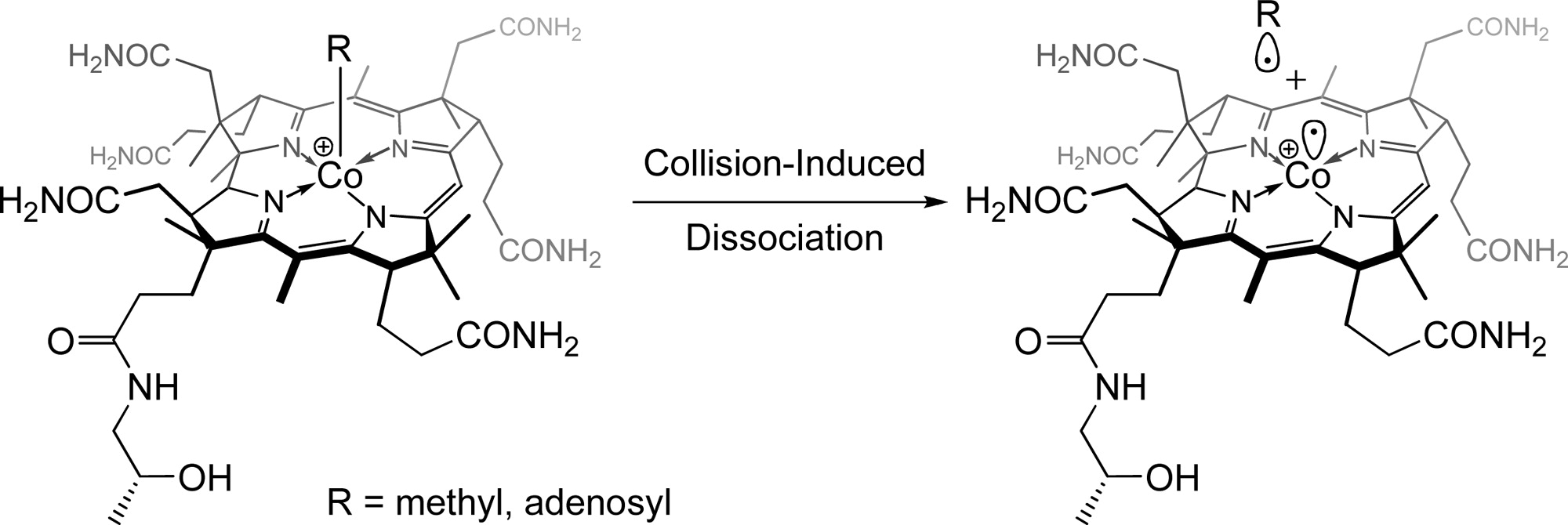Elementary Steps of Catalysis
Ions can be accelerated and decelerated by electric field in high vacuum. When charged molecules ions are collided with rare gases at high velocity, they fragment. While some molecules simply fall apart, some rearrange before they split. When the energy of the colliding ions is controlled, it is possible to extract thermochemical information from the intensity of the fragments.
Transition metal complexes are known to catalyse a wide range of reactions. They are often charged and are hence well suited for our methodology. Simple dissociations from a metal centre can be measured straightforwardly and are relevant, because all catalytic cycle at least involve decoordination of product or coordination (the microscopic reverese of a dissociation) of reactant.
It is also possible to obtain information on elementary reactions that do not involve a change in mass, when they are followed by a dissociation. The concept is illustrated on a general reductive elimination shown below. For the measurement to tell something about the bond-forming step, the subsequent dissociation needs to be faster than the first step.

Our group has succeeded in measuring almost all types of fundamental reaction steps that occur in catalysis. Most recently we could even observe a transmetallation.
Transition metal complexes are not only used by the chemical industry, but nature uses them as well as active centre of enzymes. With complexes that mimick the enzymatic environment valuble insight can be gained into such reactions, e.g. the way cobalamine (vitamin B12) works. Because there is no solvent or counter ion present during the measurement, the obtained energies are ideal for comparison with computations (benchmarking).

